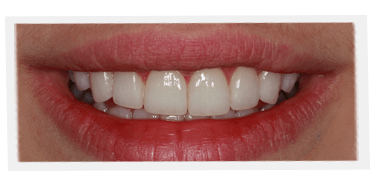
Welcome back to the continuation of our two part series on the Guiding Principles of Aesthetics. In Part 1 we discussed the Golden Mean and Golden Spirals. In this installment, we’ll be discussing the last part, known as the Golden Rectangles. If you are interested in learning more, be sure to check out my book, A Guide to the Perfect Smile, where we dive even further into the “aesthetics of nature” and how these principles relate to the smile.
Golden Rectangles
The 1 to 1.6 ration has intrigued experts for centuries because of its manifestation in aesthetics. It occurs in triangles, circles, and spirals, but most notably in the Golden Rectangle, a figure with two sides bearing the magical relationship to each other. The Golden Rectangle is considered one of the most visually appealing geometric forms. For years, experts have been finding examples in everything from the edifices of ancient Greece to the best-known art masterpieces through the centuries. Even the proportions of the famous Parthenon in Greece bore witness to the Golden Rectangle’s influence. In the thirteenth century, Thomas Aquinas, who was instrumental in resurrecting the thought of the ancient Greek philosopher, Aristotle, stated a fundamental truth about aesthetics – that “the senses delight in things duly proportioned.” St. Thomas was expressing the direct and very often measurable relationship between beauty and mathematics – a relationship that applies to natural beauty and man’s art.
With the knowledge that the 1 to 1.6 relationship works throughout nature, it was only a matter of time before early physicians and dentists began to opine on this relationship vis-à-vis the teeth. As dentists applied these theories to the teeth, however, a certain controversy arose. The question was whether the golden relationship was to be found in the natural, beautiful smile, as in other aspects of nature. And if it was, whether it was based on the relationship of one tooth to the other or on a general relationship of the smile relative to the overall proportions of the face.
Several of my articles argue that the answer is both – that the relationship is actually a marriage of these concepts. Dentists weren’t seeing this, and for two reasons.
First, they were measuring only the relative width of teeth instead of their width in relationship to their height. But how can you say that something is golden by definition, mathematically, width and height, if you’re only looking at the width? If the desired proportions is 1 to 1.6 and you’re dealing with a very long tooth in one person’s mouth, surely it can’t have the same width proportion as a very short tooth in someone else’s mouth.
Second, they were measuring the teeth individually instead of in relation to each other. My work showed that the two front top teeth, when viewed together as a unit, are golden in proportions, with a width-to-height ratio of 1 to 1.6. Once you’ve got these two teeth figured out as a Golden Rectangle, you can show their relationship to the other teeth and the overall relationship that the teeth will have to the smile and the face.



